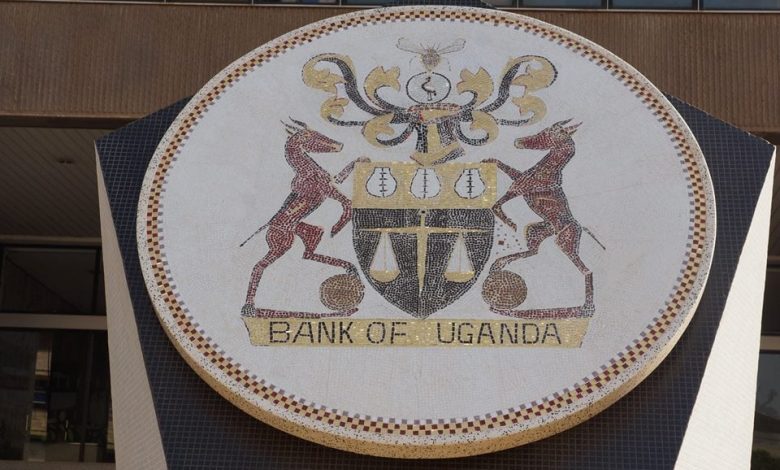Over UGX199 billion used on printing and issuance of new currency-BOU
According to Bank of Uganda, the net value of banknotes in circulation increased by Shs477Bn from Shs6.6Trn in June 2022 to Shs7.1Trn in June 2023 while that of coins increased by Shs9.9Trn.

Bank of Uganda has revealed that Shs199.3Bn was spent on printing and issuance of new currency in Uganda in 2022/23, up from Shs172.3Bn spent in FY2021/22.
“As the Bank issued more new currency to meet the economy’s demand during the period 2022/23, currency issuance costs also grew by 16% from Shs172.3Bn in FY2021/22 to Shs199.3Bn in 2022/23,”
According to Bank of Uganda, the net value of banknotes in circulation increased by Shs477Bn from Shs6.6Trn in June 2022 to Shs7.1Trn in June 2023 while that of coins increased by Shs9.9Trn. The increment was attributed to demand for cash in response to increased economic activity.
The Central Bank also revealed that as at June 30, 2023, mobile money transaction values significantly increased from Shs156Trn in June 2022 to Shs191.3Trn, while the number of registered mobile money customers stood at 42.9 million reflecting a 11.4% increase from 38.5 million in June 2022.
“During the year ended 30 June 2023 mobile money transaction values significantly increased by 22.6% from UGX 156 trillion in June 2022 to UGX 191.3 trillion while the transaction volumes increased by 20.8% from 4.8 billion to 5.8 billion over the same period. Similarly, the number of registered mobile money customers as at June 30 2023 stood at 42.9 million reflecting a 11.4% increase from 38.5 million in June 2022. The active customers (who transacted at least once in the preceding three months) increased by 16.3% from 22.7 million in June 2022 to 26.4 million in June 2023,” reads the report.
Economic growth
According to Uganda Bureau of Statistics (UBOS), the economy grew by 5.3 percent in FY 2022/23 higher than the revised growth of 4.6 percent in FY 2021/22 reflecting economic recovery as global demand improves.
The bank notes that growth was largely driven by the services and industry sector as the services sector grew at 6.2 percent, 2.1 percentage point higher than the previous fiscal year growth, largely attributable to the expansion of trade and repair activities which contributed 8.3 percent to the sector growth. Real estate activities and education activities also made notable contribution to growth of the service sectors.
The industry sector grew at 3.9 percent from the 5.1 percent registered the previous year largely driven by manufacturing and construction activities with 80 percent combined contribution to the increase of the sector growth.
Growth in construction activities decreased to 4.7 percent from 5.2 percent in the previous year while growth in manufacturing decreased to 3.0 percent from the 3.8 percent observed in FY 2021/22.
The Agricultural, Forestry and Fishing activities is estimated to have grown at a constant rate of 5.0 percent in FY 2022/23 and were mainly bolstered by crops and livestock subsectors which grew at 4.7 percent and 8.9 percent respectively during year.
Inflation Developments
Despite the normalization of global supply chains, lower food and energy prices, Inflation were higher than the Bank’s 5 percent target for the most part of the FY 2022/23. Inflation remained high reflecting effects of adverse weather conditions on agricultural output translating into higher food crops and other goods prices. In addition, the low pass-through of World oil prices to the domestic economy accounted for the persistent high energy prices over the year.
Headline and core inflation averaged 8.8 percent and 7.4 percent, respectively in FY 2022/23. Particularly, Headline inflation accelerated by 5.4 percentage points from the level registered in the FY 2021/22 largely reflecting the adverse weather conditions. This is the main driver behind the other goods inflation which is visibly the most significant driver of inflation.
Exchange Rate Developments
In comparison to the FY 2021/22, BOU says the Uganda shilling depreciated by 5.1 percent against the US dollar to an annual average exchange rate of UGX 3752.47/US$ in FY 2022/23 from UGX 3571.78 recorded in 2021/22.
“Depreciation pressures were carried over from the last quarter of FY 2022/23 as most advanced economies adopted hawkish monetary policy to curtail global inflationary pressures. The Uganda shilling depreciated, year-on-year, by 8.4 percent in both August 2022 and September 2022 registering the highest monthly average rates in FY 2022/23 of UGX 3832.38 and UGX 3825.59, respectively. “
Lending and Deposit Rates
In FY 2022/23, the weighted average shilling lending rate remained flat at 18.6 percent relative to the previous financial year. This was largely driven by a neutral monetary policy stance in the second half of FY 2022/23 which cushioned the credit markets from the lagged effects of the tightening initiated in the first half of the financial year.
In addition, BoU provided liquidity support to commercial banks through the Standing lending Facility. However, the weighted average foreign currency lending rate rose to 7.7 percent from 6.0 percent over the same period. The average time deposit rates on shilling deposits rose to 10.6 percent in FY 2022/23 compared to 8.2 percent in FY 2021/22. The spread between the shilling lending and time deposit rates narrowed to 7.9 percent in FY 2022/23 from 10.3 percent in FY 2021/22 reflecting a higher funding cost to lenders.







